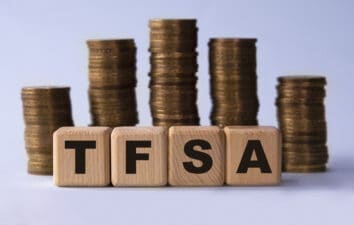Fortis Inc (TSX:FTS)(NYSE:FTS) has been a popular stock lately. With economic worries growing, investors have been looking for ways to recession-proof their portfolios. One of the most popular ways to do that is through utility stocks, which have highly stable, government-regulated revenue streams.
Utilities tend to do well during recessions because their core services (heat, light and sometimes water) are indispensable. People need these bare essentials of life more than nearly anything else they purchase, so they tend to be among the last items cash-strapped consumers will cut out of their budgets.
With Fortis being one of Canada’s best-performing utility stocks, it’s no wonder it’s popular among recession-wary investors. The company has raised its dividend every single year for 46 years, which proves that it’s among the most reliable income earners on the TSX.
However, before you buy this stock, there is one overlooked issue that you need to be aware of. As you’re about to see, Fortis has a relatively high level of debt–one that could become a problem in a high interest rate environment.
Although the company’s debt hasn’t hurt profitability so far, high interest expenses could eat into net income and hurt the company’s financial position over time.
How much debt does Fortis have?
As of its most recent annual report, Fortis had $23.5 billion in total debt and $36 billion in total liabilities. By contrast, the company had $52 billion in total assets, of which $886 million was goodwill. This leaves the company with $16 billion in shareholder’s equity, or $35 in book value per share.
As you can see, Fortis has considerably more assets than liabilities, even when goodwill and intangibles are taken out of the equation. Additionally, the Wall Street Journal reports that the company has an interest coverage ratio of 2.35, which is considered fairly good.
Based on the above numbers, Fortis’ debt level could be characterized as high but manageable. However, we still have to look at the company’s upcoming capital expenditure program.
The $18.3 billion capital expenditure program
Fortis is set to spend $18.3 billion on capital expenditures over the next five years. These expenditures will improve and extend infrastructure to increase the company’s rate base.
Revenue-boosting expenditures are good news on the surface. However, when you’re looking at a $18.3 billion expenditure plan, there’s always the question of how it will be financed.
If Fortis’ 18.3 billion in capital expenditures were financed entirely by debt, it could nearly double the company’s liabilities. Additionally, the company’s interest expenses would surge. Exactly how much they’d increase would depend on interest rates over the next five years. However, it would almost certainly be a considerable jump.
Is it a problem?
Whether Fortis’ debt will become a problem depends on three factors:
How much of the $18.3 billion capital expenditure program is financed by debt.
How successful the program is at increasing the company’s rate base.
Where interest rates go in the next five years.
Right now, Fortis appears quite able to cover its interest without cutting into earnings too much. However, in a worst-case scenario, where the company’s capital expenditures are financed entirely by debt, the rate base doesn’t increase as much as expected, and interest rates rise dramatically, the company’s debt burden will become a problem.







